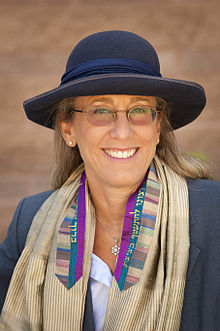While it was once common for Jewish brides to be veiled during the wedding ceremony, today brides may choose to wear a veil, wear a veil pinned to their hair without placing it over their face or, forgo a veil altogether. If they choose to, their partner lowers the veil over their face at the bedeken (veiling ceremony). This often takes place along with the ketubah signing shortly before the wedding ceremony begins. Historically, this ritual assumes a male/female binary, but anyone of any gender can assume this tradition.
There are two Jewish stories about weddings and veils, both from the book of Genesis in the Torah. First, the Torah describes how, at the initial meeting between Rebecca and Isaac, Rebecca lowered her veil as a sign of modesty as she came forward to meet her intended.
Later, the Torah tells us that Isaac and Rebecca’s son, Jacob, was deceived into marrying Leah rather than his beloved Rachel because he didn't recognize her beneath her heavy veil. Many say the custom of bedeken was developed to allow grooms to confirm that the bride standing before him is his intended.
Even if neither partner is wearing an actual veil, a bedeken before the wedding ceremony is a reminder that, while we put on our most beautiful face for each other at the wedding, each person wears many veils; in fact, the Torah teaches us that each of us has 70 levels. In a loving relationship, over time, many of those veils will be lifted, revealing different levels.
The bedeken is an opportunity to remind ourselves that we are marrying all 70 levels, and throughout their marriage, partners will continue to discover new things about themselves and about one another.
Rabbi Bonnie Koppell serves as the associate rabbi of Temple Chai in Phoenix, AZ, where she also directs the Deutsch Family Shalom Center. A graduate of the U.S. Army War College, she retired with the rank of Colonel after 38 years of service as a U.S. Army Reserve Chaplain in June 2016.


